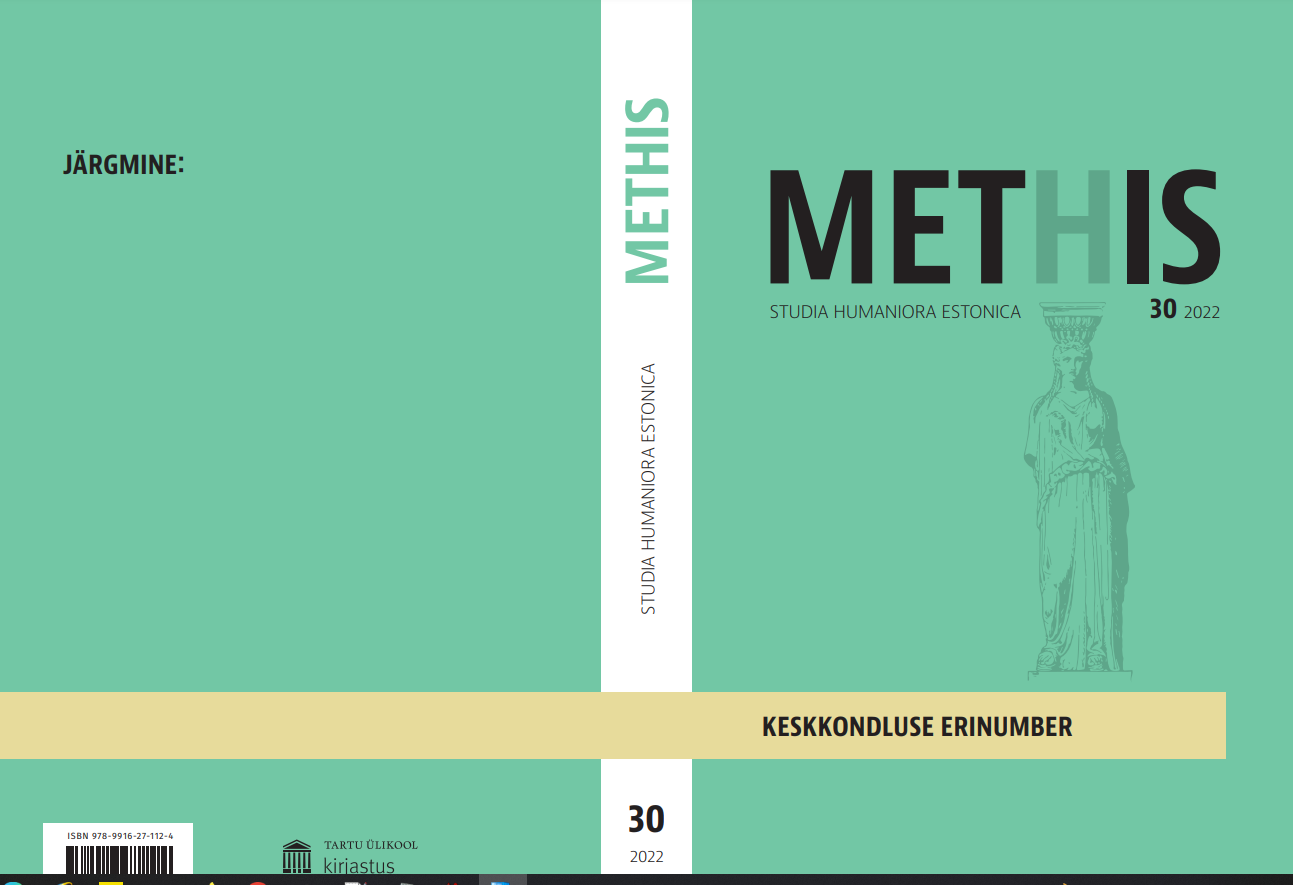Vladimir Beekman, Aatomik ja fosforiidisõda / Vladimir Beekman, Atom-Boy, and the Phosphorite War
DOI:
https://doi.org/10.7592/methis.v24i30.22107Abstract
Kirjanik Vladimir Beekman kirjutas Nõukogude Eesti lastele kaheosalise raamatu nimega „Aatomik“ (1959) ning „Aatomik ja Küberneetiline Karu“ (1968), kus uraanituuma lõhustumisel tekkinud energiale on antud inimeselaadne kuju. Piiritu jõuga peategelane osaleb looduse ümberkujundamisplaanides, millel on suur keskkonnamõju. Raamatud järgivad Nõukogude Liidu tuumaenergeetika arendusplaane, nii nn rahuaatomi kui ka külma sõja jutupunkte. Artiklis on võrreldud raamatuis kujutatud tegevusi tõelisuses aset leidnud sündmustega, uuritud kirjutamiskonteksti ning teema levikut lastekirjanduses. Fosforiidikaevandamise ohu algusaegadel ilmus Beekmanil aga keskkonnakatastroofi eest hoiatav romaan „Eesli aasta“ (1979).
Summary
In Soviet Estonia, Vladimir Beekman (1929–2009), a writer with a degree in engineering, wrote a two-story sequence for children: Aatomik (‘The Atom-Boy’, 1959) and its sequel Aatomik ja Küberneetiline Karu (‘The Atom-Boy and the Cybernetic Bear’, 1968), in which the energy generated by the fission of uranium nuclei was given a human form. The publishing of the books was followed by puppet-animation films. The protagonist, a boy with immense power, is involved in several plans of transforming the natural world, projects that had or would have had major environmental impact and caused catastrophes. The stories follow the Soviet Union’s nuclear development plans, both the narratives introducing the “Atoms for Peace” policy and the Cold War propaganda. The article juxtaposes the adventures of the Atom-Boy with the nuclear tests and the achievements of the nuclear industry in the Soviet Union.
Beekman began his literary career as a poet, eagerly reflecting the ideals of Soviet society, including the Cold War propaganda and the nuclear arsenal development. He had a background that suited the regime, having spent part of his boyhood in a Soviet orphanage and making his literary debut in the Stalinist period. He graduated from the Tallinn Polytechnic Institute as a chemical engineer, but made his career as a literary administrator, serving as a long-standing secretary and chairman of the Writers’ Union. He left behind a valuable legacy as a translator of Western children’s literature into Estonian (Selma Lagerlöf, Astrid Lindgren, Tove Jansson, Annie M. G. Schmidt, etc).
Beekman’s stories of the Atom-Boy fit into the tradition of writing about nuclear energy for children. Both Soviet and Western literatures provide examples of this genre in children’s and young adult literature. Such books might belong to the genre of popular science for kids (The Walt Disney Story of Our Friend the Atom), face the fears or casualties of the nuclear accidents in power plants (Joe Holliday’ s young adult book series in the 1950s, Leonid Daien’s Chornobyl – the Bitter Grass), or advocate and justify this energy source. Beekman’s stories belong to the last category: the experiments of the Atom-Boy finally all end well, without doing irreversible damage to the environment. He even melts the ice of the Arctic Ocean with the help of nuclear power.
As nuclear testing and the related problems and accidents were classified in the Soviet Union, it remains unclear whether Beekman's tales of the Atom-Boy belong to the realm of popular science or science fiction for kids. They are usually given the label of ‘the fairy-tale of the Century of Technology’. The stories follow the Soviet Union’s propaganda points on nuclear power, but also on nuclear arms race.
In 1979 Beekman published the novel Eesli aasta (‘The year of the donkey’), which warned of environmental disaster during the early days of the phosphate mining plans. The Writer’s Union played a role in the campaign against phosphate mining, known as the Phosphorite War.


